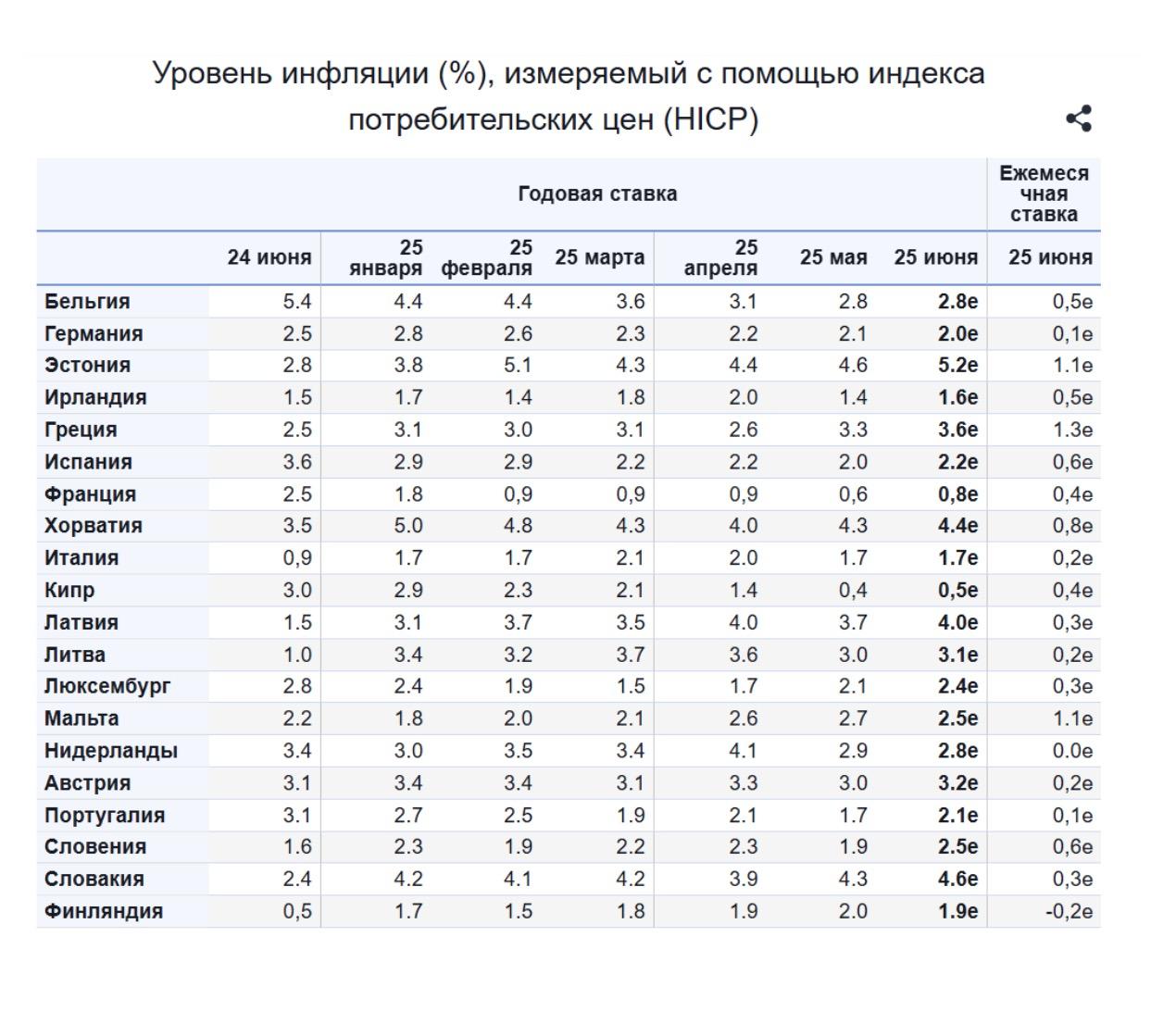According to Belstat, real incomes in Belarus rose by about 10% in the first five months of 2025 compared to the same period last year. BISR analyst Alexey Avdonin attributed the increase to economic growth and low inflation.
“We have a relatively low level of inflation compared to other countries. Take the EU, for example — they’re actively printing money and racking up debt as they ramp up militarization. We, on the other hand, are following all the laws of economics,” the expert said on Alfa Radio on July 16, 2025.
To verify that claim, WTF journalists compared inflation rates in Belarus and EU countries. The latter are split between eurozone members and those using national currencies.
In June, Belarus’s annual inflation rate stood at 7.3%.
In the eurozone, inflation rates vary by country — from 0.5% in Cyprus to 5.2% in Estonia. On average, annual inflation in the eurozone was 2% in June 2025. That’s three and a half times lower than in Belarus. What’s more, unlike in Belarus, where inflation has risen compared to June of last year, the eurozone is seeing a downward trend.

The remaining EU countries — Sweden, Denmark, Poland, Czechia, Hungary, Bulgaria, and Romania — are outside the eurozone. Romania has the highest inflation among them at 5.7%. And that’s still lower than in Belarus.


